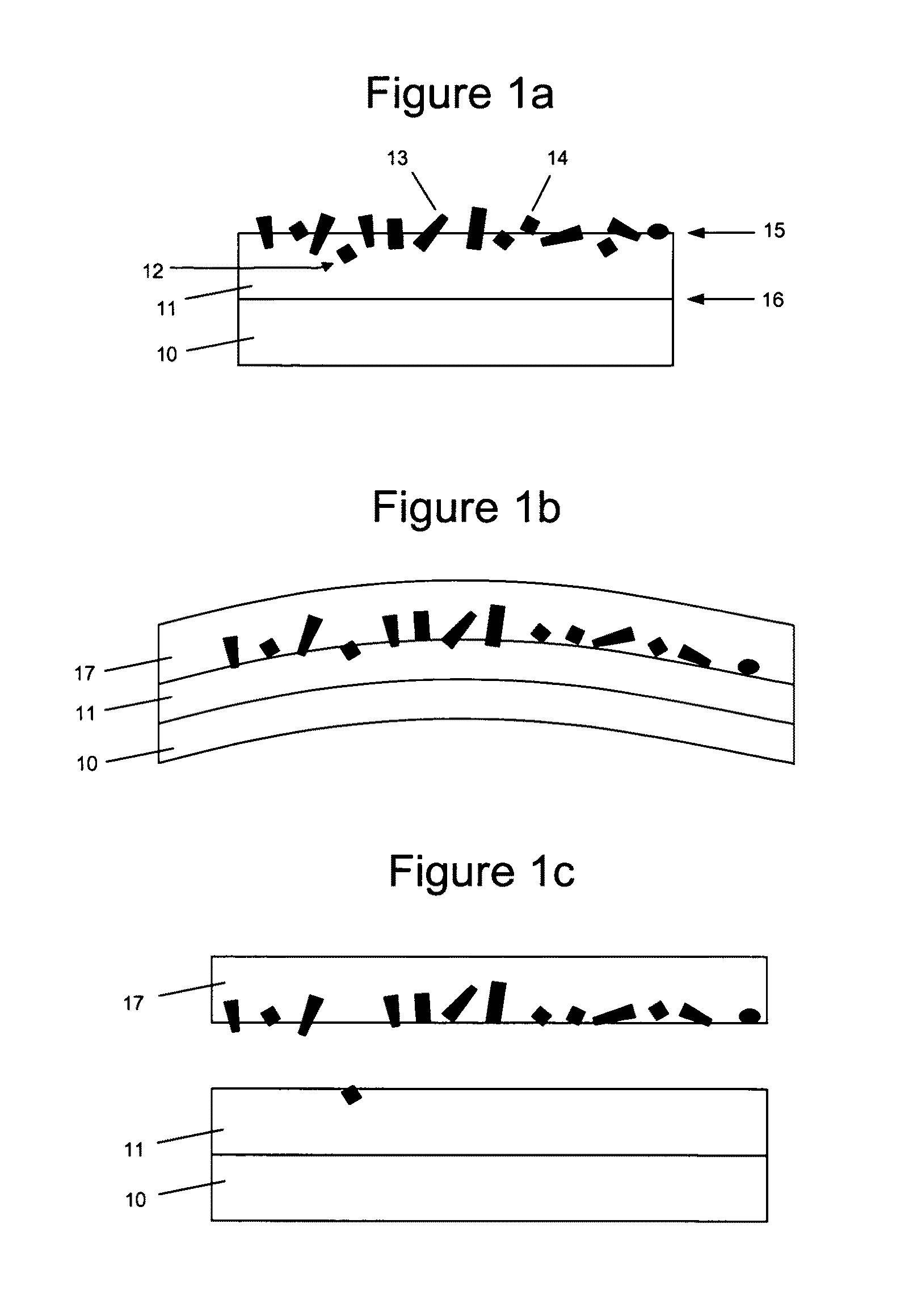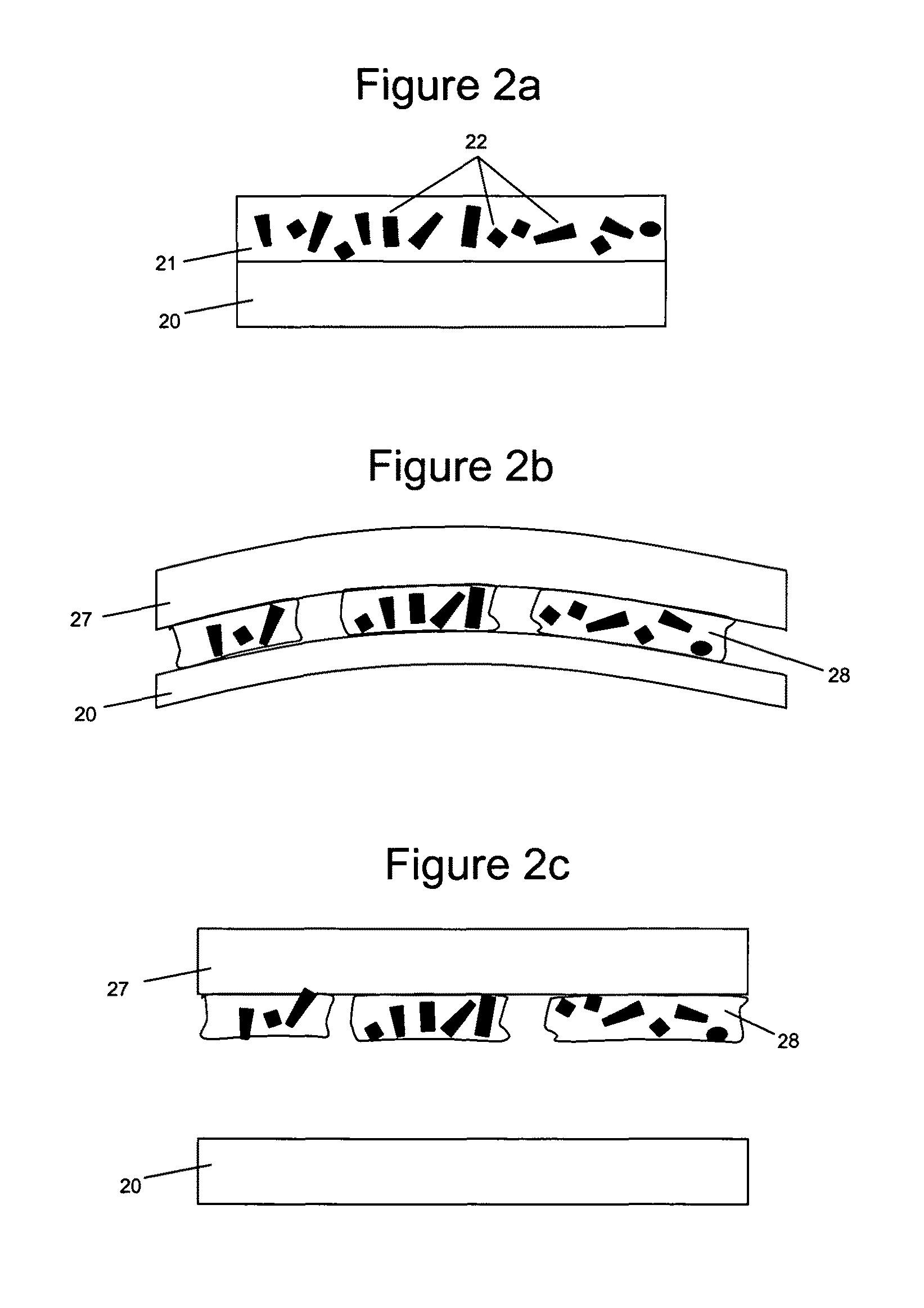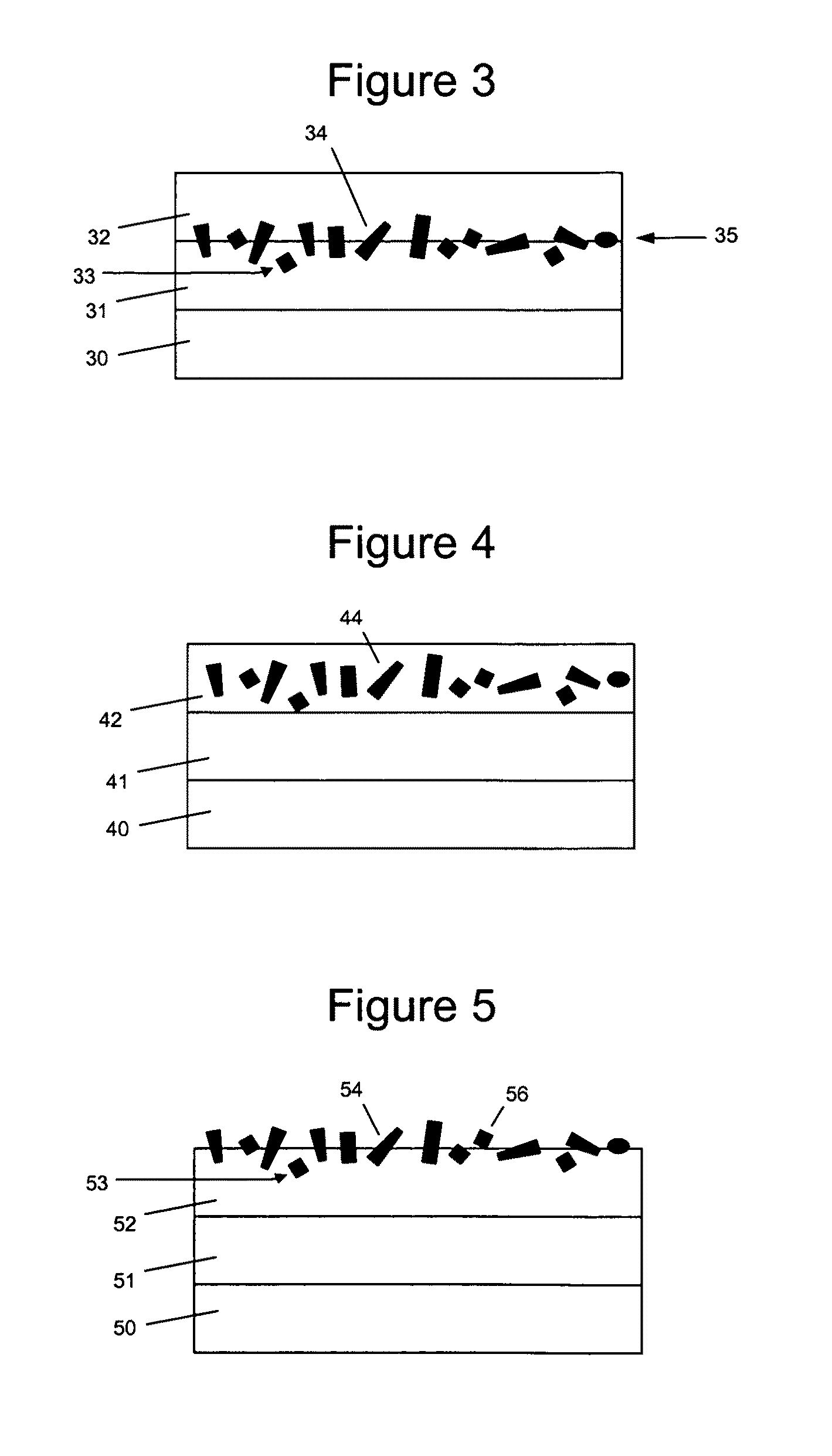Insertable medical devices having microparticulate-associated elastic substrates and methods for drug delivery
a technology of elastic substrates and insertable medical devices, which is applied in the direction of prosthesis, catheters, extracellular fluid disorders, etc., can solve the problems of unsatisfactory polymer systems, difficult control of drug release, and general undesirable preparations
- Summary
- Abstract
- Description
- Claims
- Application Information
AI Technical Summary
Benefits of technology
Problems solved by technology
Method used
Image
Examples
example 1
[0194]The elastic surface of the balloon of a balloon catheter was provided with a flexible hydrogel coating with associated paclitaxel microparticulates. The balloon catheter that was used in the coating process was obtained from Minnesota Medtec (Maple Grove, Minn.). The elastic portion of the balloon was made from nylon and has a balloon wall thickness of 5-10 μm.
[0195]A hydrogel coating solution was prepared using photo-polyacrylamide (prepared as described U.S. Pat. No. 6,007,833, Examples 1 & 2), which was weighed and dissolved into a mixture of IPA and water (50% IPA / 50% water (v / v)) at a concentration of 10 mg / mL. The balloon was coated in the photo-polyacrylamide coating solution using a dip process with a withdrawal rate of 0.5 cm / s. After the hydrogel coating solution was applied to the balloon, it was subjected to UV cure. The coated balloon was placed in front of a Dymax 2000-EC Series UV Floodlamb with a 400 Watt metal halide bulb, approximately 20 cm from light source...
example 2
[0198]The coating process as described in Example 1 was repeated, with the exception of the use of a different coating composition to form the hydrogel coated layer.
[0199]A hydrogel coating solution was prepared using photo-polyacrylamide (Example 1) at 5 mg / mL, photo-poly(vinylpyrrolidone) (prepared as described in Example 4 of U.S. Pat. No. 5,414,075) at 25 mg / mL, poly(vinylpyrrolidone) K90 (BASF) at 10 mg / mL, and 4,5-bis(4-benzoylphenylmethyleneoxy)benzene-1,3-disulfonic acid (prepared as described in U.S. Pat. No. 6,278,018 (Example 1)) at 0.25 mg / mL, dissolved into a mixture of IPA and water (15% IPA / 85% water).
[0200]Dipcoating, UV treatment, and paclitaxel microparticulate coating was performed as described in Example 1.
example 3
[0201]The elastic surface of the balloon of a balloon catheter was provided with a flexible hydrogel coating and then paclitaxel microparticulates were formed on the hydrogel surface.
[0202]The coating processes as described in Examples 1 and 2 were repeated to provide hydrogel coated layers.
[0203]Next, a microparticulate-forming composition was prepared by dissolving paclitaxel in methanol at a concentration of 30 mg / mL. The composition was then applied to the photo-polymer coated surfaces by pipetting a known volume of drug suspension (typically 10-20 μl). The pipetted droplet was evenly distributed over the balloon surface by rotating the balloon until the solvent was visibly dry.
[0204]FIGS. 12a and 12b are micrographs of the elastic substrate having a hydrogel coating with paclitaxel microparticulates partially embedded in the hydrogel, prepared according to this method.
PUM
| Property | Measurement | Unit |
|---|---|---|
| thickness | aaaaa | aaaaa |
| thickness | aaaaa | aaaaa |
| thicknesses | aaaaa | aaaaa |
Abstract
Description
Claims
Application Information
 Login to View More
Login to View More - R&D
- Intellectual Property
- Life Sciences
- Materials
- Tech Scout
- Unparalleled Data Quality
- Higher Quality Content
- 60% Fewer Hallucinations
Browse by: Latest US Patents, China's latest patents, Technical Efficacy Thesaurus, Application Domain, Technology Topic, Popular Technical Reports.
© 2025 PatSnap. All rights reserved.Legal|Privacy policy|Modern Slavery Act Transparency Statement|Sitemap|About US| Contact US: help@patsnap.com



